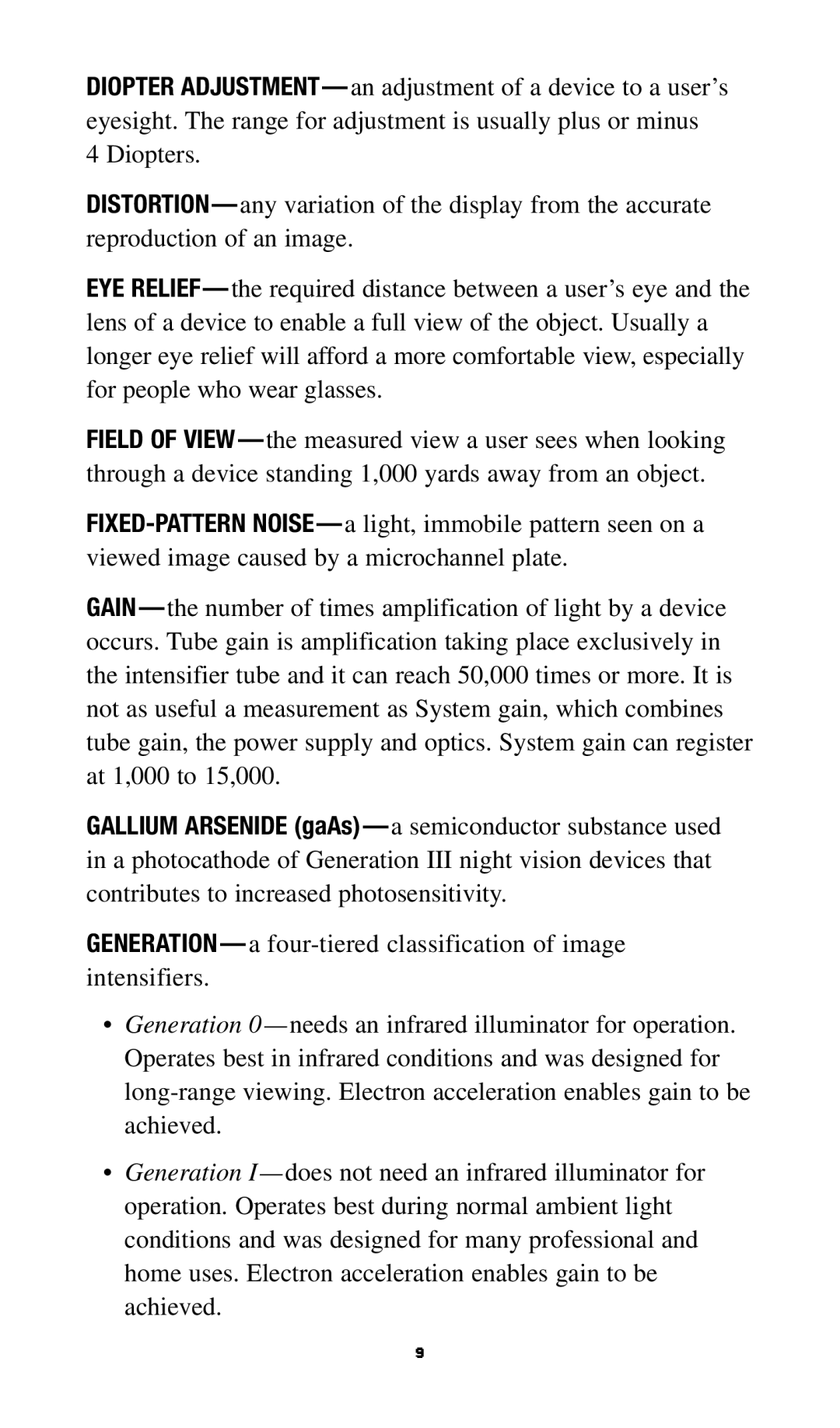DIOPTER ADJUSTMENT —an adjustment of a device to a user’s eyesight. The range for adjustment is usually plus or minus 4 Diopters.
DISTORTION —any variation of the display from the accurate reproduction of an image.
EYE RELIEF—the required distance between a user’s eye and the lens of a device to enable a full view of the object. Usually a longer eye relief will afford a more comfortable view, especially for people who wear glasses.
FIELD OF VIEW —the measured view a user sees when looking through a device standing 1,000 yards away from an object.
FIXED-PATTERN NOISE —a light, immobile pattern seen on a viewed image caused by a microchannel plate.
GAIN —the number of times amplification of light by a device occurs. Tube gain is amplification taking place exclusively in the intensifier tube and it can reach 50,000 times or more. It is not as useful a measurement as System gain, which combines tube gain, the power supply and optics. System gain can register at 1,000 to 15,000.
GALLIUM ARSENIDE (gaAs) —a semiconductor substance used in a photocathode of Generation III night vision devices that contributes to increased photosensitivity.
GENERATION — a four-tiered classification of image intensifiers.
•Generation 0 — needs an infrared illuminator for operation. Operates best in infrared conditions and was designed for long-range viewing. Electron acceleration enables gain to be achieved.
•Generation I — does not need an infrared illuminator for operation. Operates best during normal ambient light conditions and was designed for many professional and home uses. Electron acceleration enables gain to be achieved.
